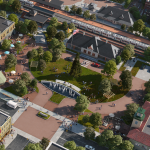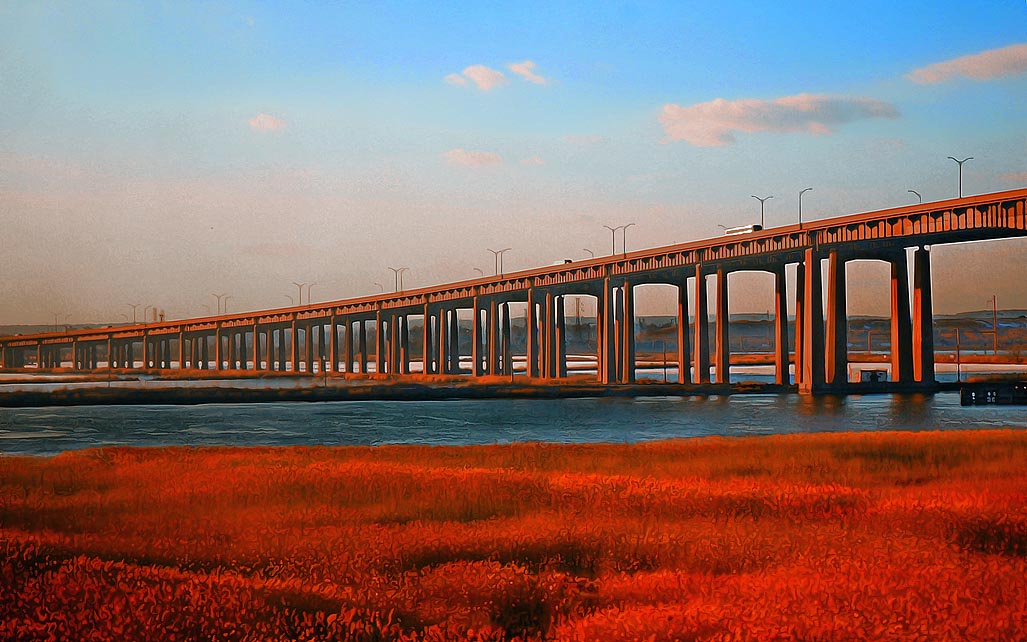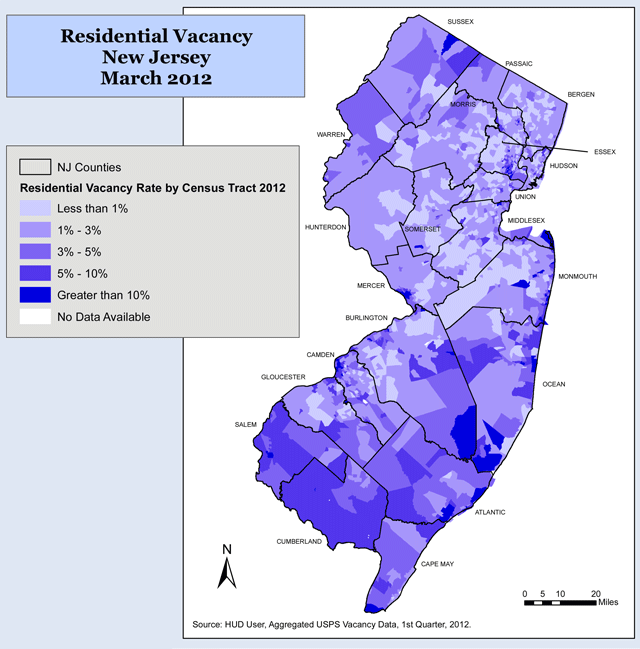New Jersey Future Blog
The Link Between Energy Use and Land Use
June 19th, 2007 by Tim Evans
- Population density in Hudson County is about 13,000 people per square mile, the highest among New Jersey’s 21 counties and one of the most densely populated counties in the country. At the other end of the spectrum, Hunterdon County’s density is about 300 people per square mile. Union County, which contains the city of Elizabeth and a host of first-generation suburbs, has an intermediate density of about 5,000 per square mile.
-
More than one in three Hudson County commuters (34.2 percent) use public transportation to get to work, according to the 2000 Census. In Union County, 10.9 percent commute by transit. In Hunterdon, only 1.8 percent do so.
-
In Hudson County, more than three-quarters (78.2 percent) of all households own either one (43.1 percent) or zero (35.1 percent) vehicles. Zero- or one-car households make up 48.0 percent of Union County’s households. Hunterdon has the lowest percentage among all of New Jersey’s counties of households with one or zero vehicles—26.3 percent, only a third of Hudson County’s rate and little more than half of Union County’s.
-
Per-capita daily vehicle miles traveled (VMT) is four times higher in Hunterdon County than in Hudson County—38.3 daily miles per capita in Hunterdon vs. only 9.4 in Hudson. Union County residents drive 20 miles daily per capita. (Numbers are computed by New Jersey Future using New Jersey Department of Transportation estimates of total VMT from 2002.)
-
Transportation accounts for 72 percent of New Jersey’s petroleum consumption and about 36 percent of its greenhouse gas emissions.
Looking Beyond Predictable Solutions
Governor Jon Corzine’s administration has taken a keen interest in addressing climate change and humans’ role in causing it. The governor has directed the Board of Public Utilities to update the state’s Energy Master Plan (for the first time since 1995), with a particular focus on finding ways to reduce New Jersey’s energy consumption. (For more about the plan, click here.) And in a parallel effort, the Department of Environmental Protection has been tasked by the governor’s Executive Order 54 with developing recommendations for reducing greenhouse gas emissions by 80 percent by the year 2050. (Click here for the text of the executive order.)
To both agencies’ credit, they have looked beyond the predictable solutions—alternative fuels, improved fuel economy, renewable energy sources, “green buildings”—and are also considering strategies geared toward changing travel behavior. Drafts of both plans include plenty of language about changing land use patterns so that people don’t have to drive as much.
As the comparison of Hudson, Union, and Hunterdon counties illustrates, land development patterns can have a huge influence on energy use and greenhouse gas emissions. Consider that Hunterdon would have to improve the fuel economy of its vehicle fleet by a factor of four in order to match the rate of vehicular energy consumption that Hudson manages by virtue of its more compact development.
Compact Development is Key
Higher development density puts destinations closer together, which increases the possibility that trips can be taken on foot or by other non-motorized means and reduces travel distances for those trips that are still taken by car. Also, high population density makes public transportation viable, which translates into fewer trips being taken by private automobile. And “density” doesn’t necessarily imply Hudson County-style development everywhere. Many of Union County’s small towns and older suburbs—Cranford, Fanwood, Hillside, Rahway, Union, Westfield—have densities 15 or 20 times higher than Hunterdon County’s overall density.
A mix of land uses—with residences, offices, public buildings, and shopping all located in close proximity—ensures that higher density actually translates into fewer and shorter automobile trips. After all, the relatively high number of units per acre in the typical suburban townhouse complex does little to cut down on car travel when the complex is isolated from shopping, workplaces, and other destinations.
The location of employment hubs is particularly important in encouraging transit use, since people can drive to the train station from their home but must be able to walk to their job (or ride a shuttle) when they get off the train or bus. Sadly, most transit-accessible job centers—Newark, Trenton, Camden—have been losing jobs for the past several decades; Jersey City is the exception that proves the rule. Meanwhile, most job growth has been taking place in highway-oriented office parks.
State government must do what it can to influence local land development practices so that compact development becomes the default pattern. The state can create incentives for new development to follow the best practices outlined in the State Development and Redevelopment Plan. The DOT can adjust its infrastructure investment priorities (and has begun doing so) to reward municipalities that develop in ways that create alternatives to driving. And the Office of Economic Growth can make a conscious effort to steer employers—both current and future—to locations that are accessible from the state’s extensive transit network. Changing development patterns may be a long-term project, but its long-term benefits in terms of energy use and greenhouse gas reduction are significant enough to justify the state’s sustained attention.
If you have any questions about this issue of Future Facts, please contact Tim Evans, Research Director.
















